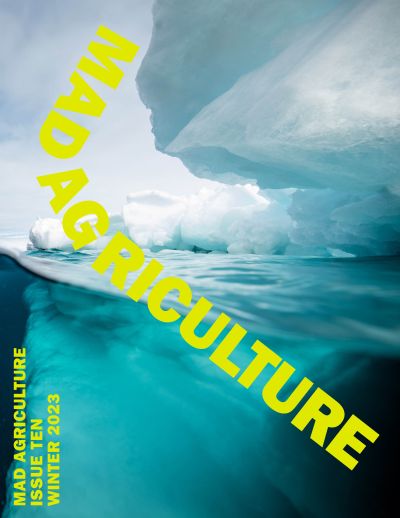
The Mad Agriculture Journal
The Heart of the Golden Triangle
Published on
January 29, 2024
Written by
Prairie Grass Ranch
Mad Lands team
Photos by
Jane Cavagnero
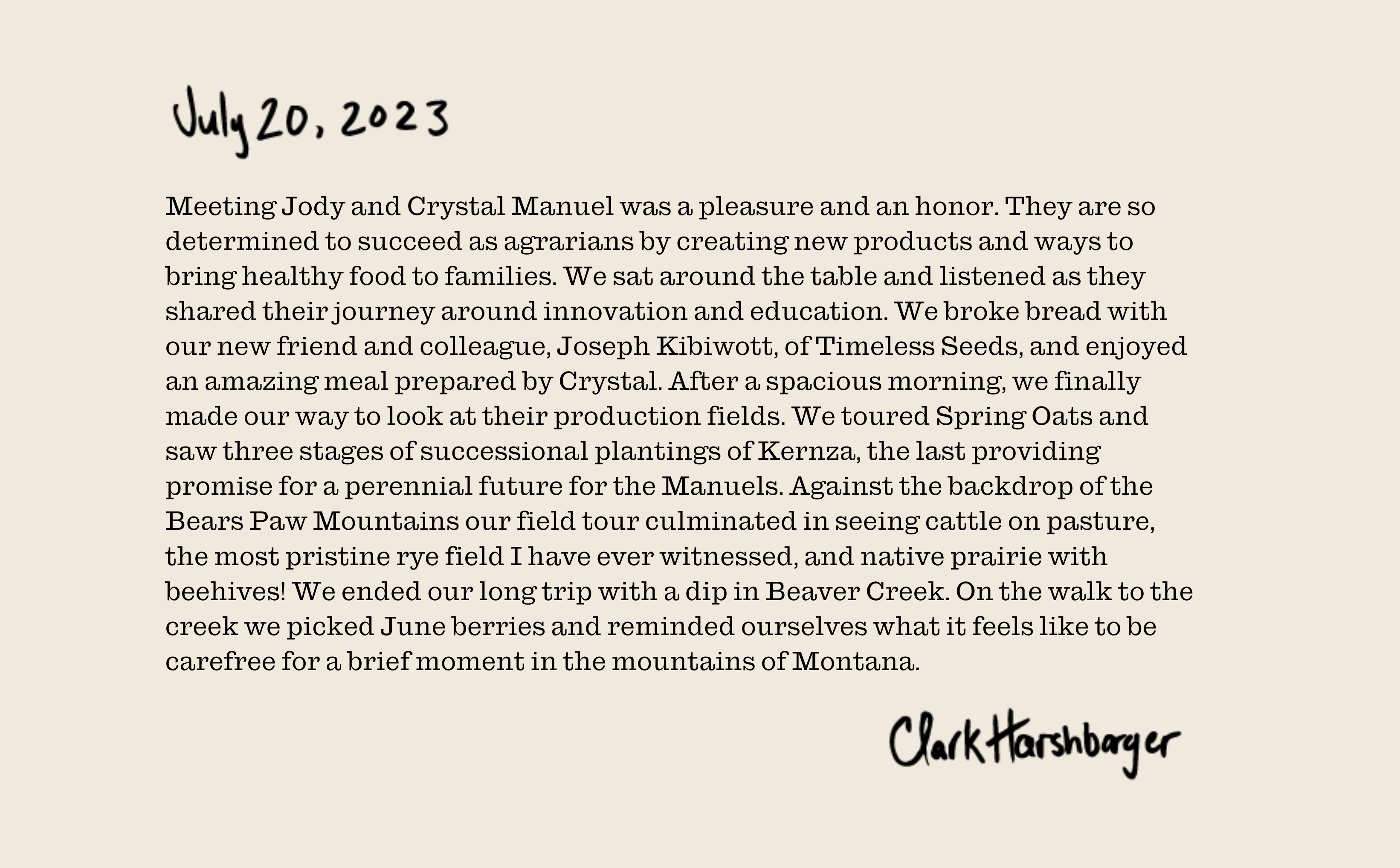
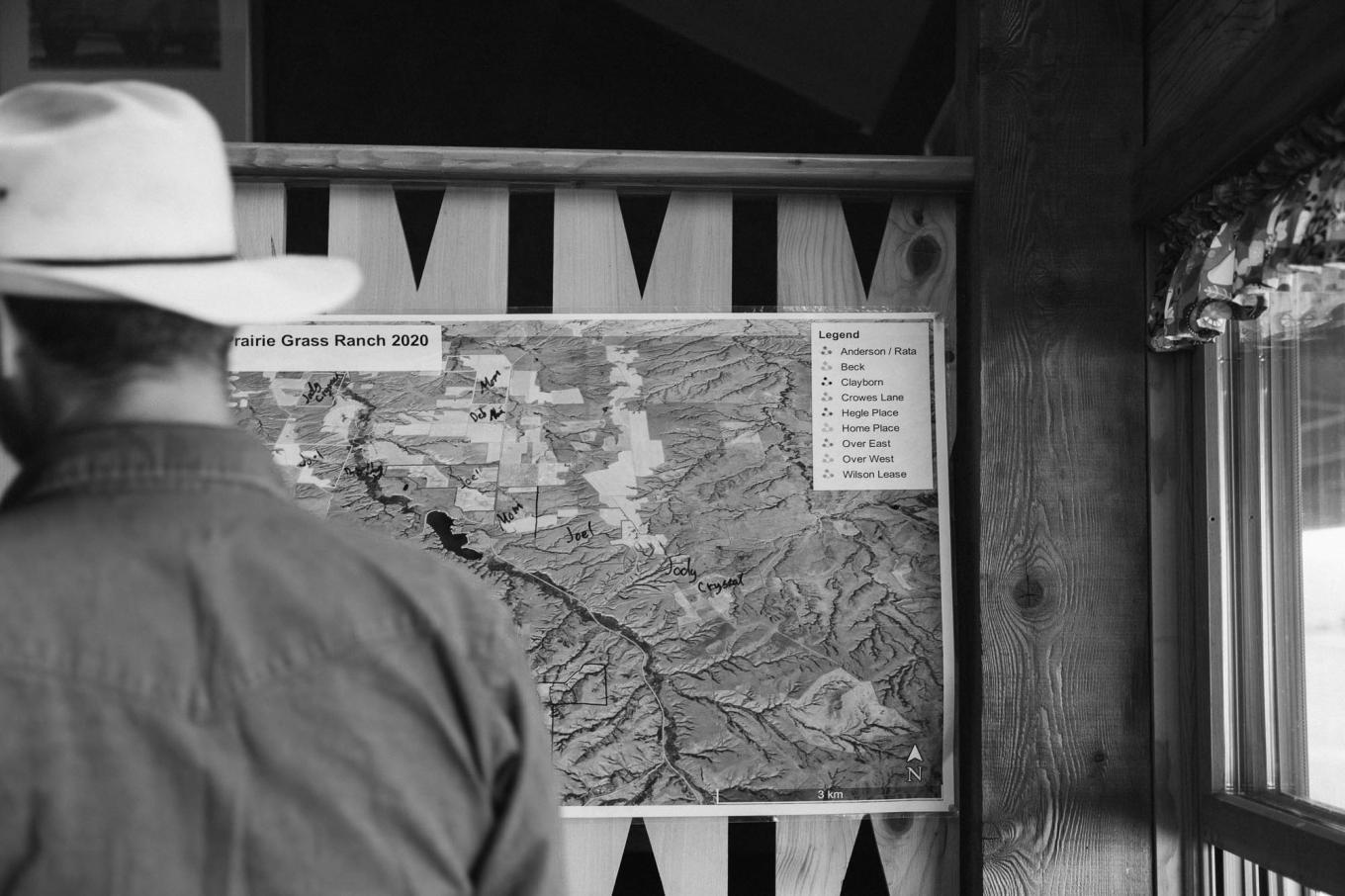
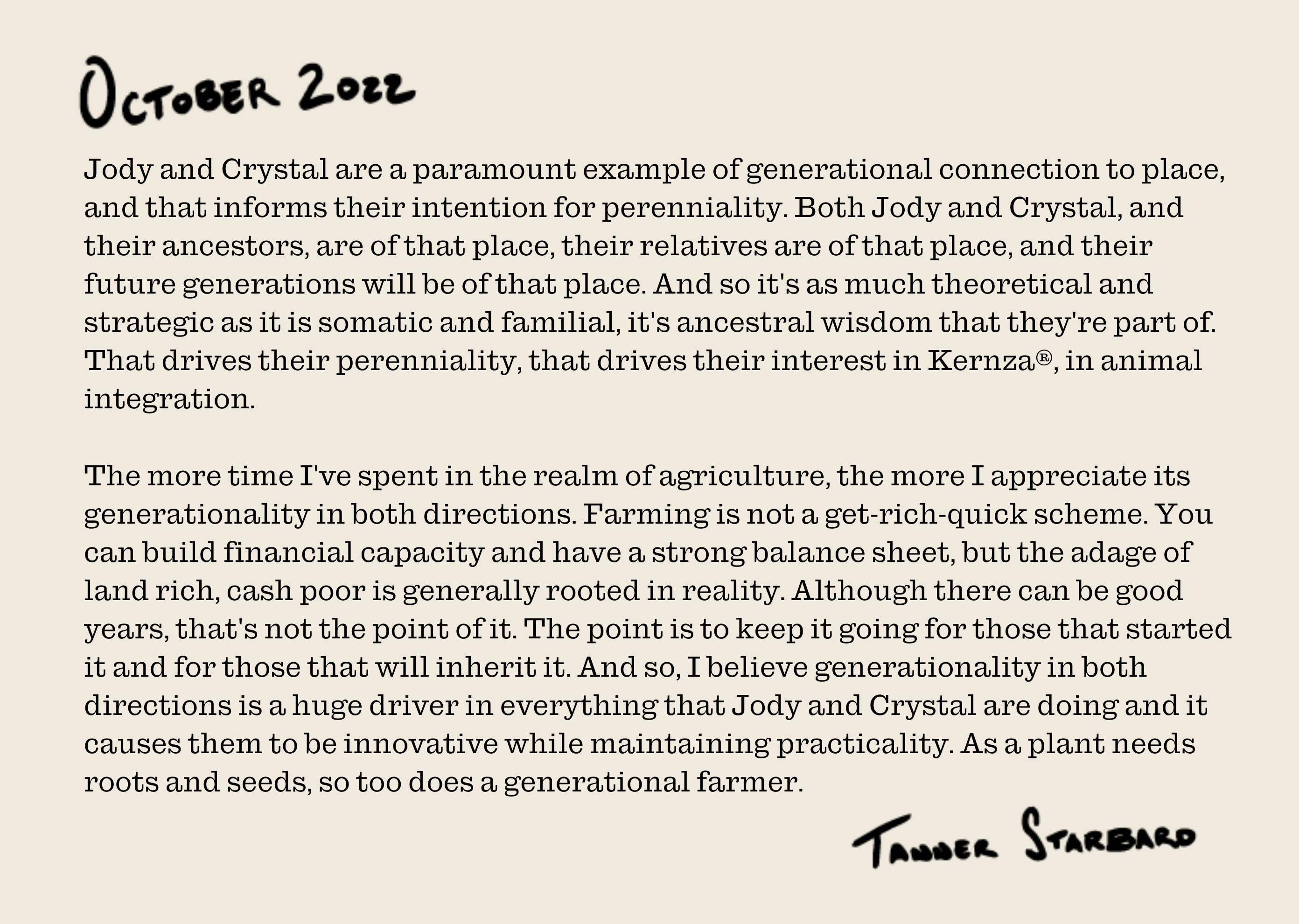
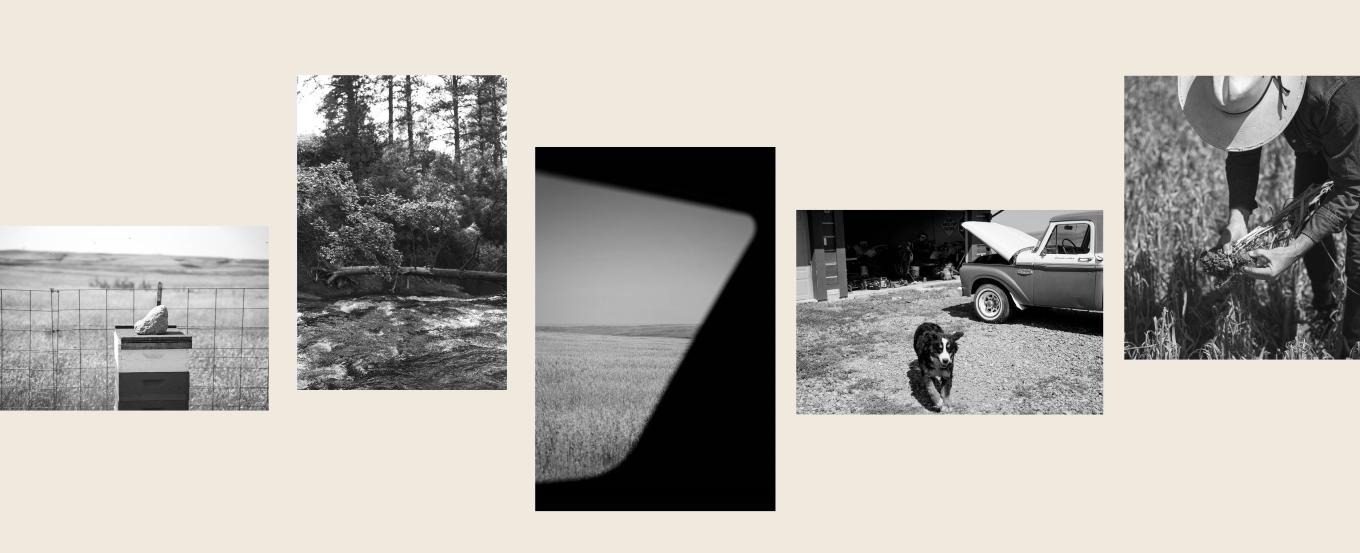
Jody Manuel
When I look out over our farm I see an ecosystem that has definitely been shaped by weather patterns that are from a 30,000-foot view, kind of the same repetitive pattern over and over again, a prevailing southwest wind, and not a lot of rainfall, but just enough to grow really good short prairie grass. And we don’t have much for flat ground where we’re at, and we’re just surrounded by what we call coulees. Some people call them draws and some ravines. And you can see the effect of our weather patterns in that. The north facing slopes of every coulee is covered with brush and trees, and tall grass, and the soil’s deeper on those faces and richer.
And then just down, you cross the bottom and come up the other side. And those sides are always barren and dry. And the grass is very short, and the soil is very thin ‘cause they’re continually pounded with the sun and the wind, whereas the sides on the north slopes are sheltered from the wind. But not only that, when it snows in our area, it seldom falls straight down. It’s usually coming in sideways, driven by wind. All of those coulees wind up with huge snow banks on those north facing slopes, which give it a good irrigation into even early June in some years.
So I guess when you translate that to our fields, you can clearly see the same patterns. We have decisions to look at when we incorporate our livestock in with our crop fields, which includes the wintertime where we’re actually feeding hay to our cattle and they leave all of their manure. It’s essentially an input, in my opinion. My thinking is we’re adding biomass up in an area where the soil’s very thin and it has a very small window of time in the springtime before it dries out for the microbial populations to do their thing. So we’re adding not only biomass, but biology to these areas that need some help.

Crystal manuel
We feel incredibly blessed to live in the direction from Havre that we do because we’re south of town headed toward the foothills of the Bears Paw Mountains.
Our house is situated along a really beautiful coulee that’s just very deep and draws a lot of wildlife and birds. When we sit in our dining room we can see the Bears Paw in the distance. Every morning to be able to wake up, have coffee, look in that direction, I feel so thankful for where we are.
We are actually located within an area known as the Golden Triangle, which for Montana would be equivalent to what the Napa Valley is to California. The Golden Triangle is most noted for producing really high quality, high protein wheats. It has a lot to do with our dry, arid climate and the hardening off of the wheat with hot winds. We have nice springs, but summer gets hot quickly, and July and August are usually pretty arid and dry which account for the qualities that come through in the grains.
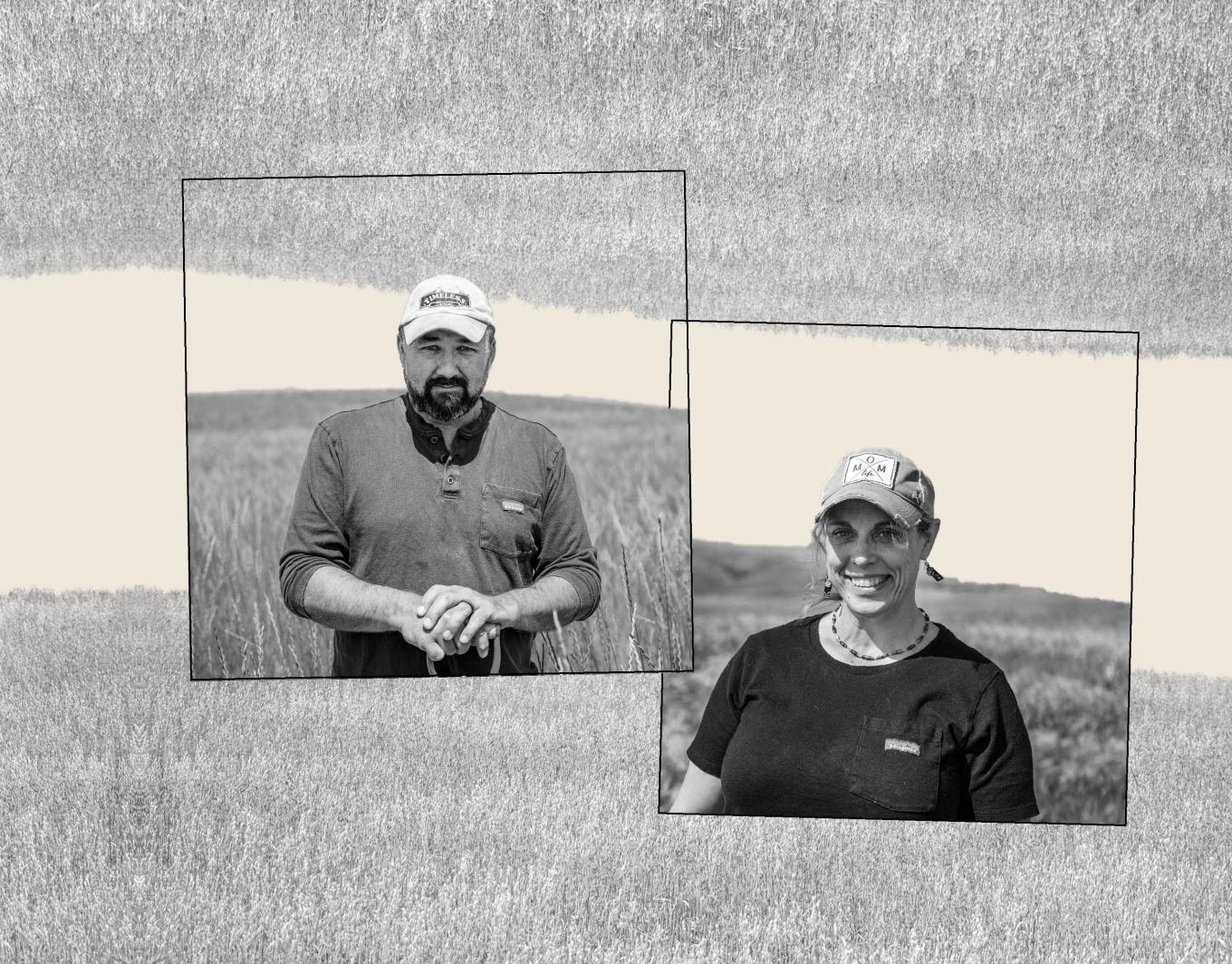
Jody manuel
Our total number of acres on the entire operation is roughly 7,400 acres. Of that, there’s just a little north of 2,000 acres in cropland. The rest is pasture. Most of the pasture is native prairie. Some of the lower areas have some introduced grasses, most notably crested wheatgrass. It was brought in by the homesteaders because it’s a grass that greens up real early in the springtime. I can understand why they would’ve done that, with winters being so long and hard.
Since we started farming organically, we’ve grown a host of annual crops, lots of small grains like emmer and spelt. We’ve grown a specialty type of barley for Timeless Seeds known as Purple Barley. Legumes have always been a big part of our rotation, mostly with lentils and chickpeas.
In the last handful of years, we have had a focus on perennial crops. It’s one of the easiest ways to control our biggest problem, which is weeds. The best way to control weeds is by planting alfalfa but it just doesn’t carry the economic benefits that these other annual crops do so it’s been very difficult to try to figure out how to make that work. Seven years ago, we found out about Kernza® and all of a sudden, it seemed there was something that we could build a perennial system around and provide a valuable cash crop and have the option of forage – either grazing in-field or harvesting hay for wintertime.
We are also interseeding Kernza® with alfalfa because we wanted to have a grass and a legume growing together. We’re pretty close to having all of our crop acres into perennials now. We’re getting to the point where we’ll have 200 or 300 acres a year, which we can grow annuals on because they still are an important part of our rotation. Because even the perennials over time will be rotated out and the process started over with an annual crop in between.
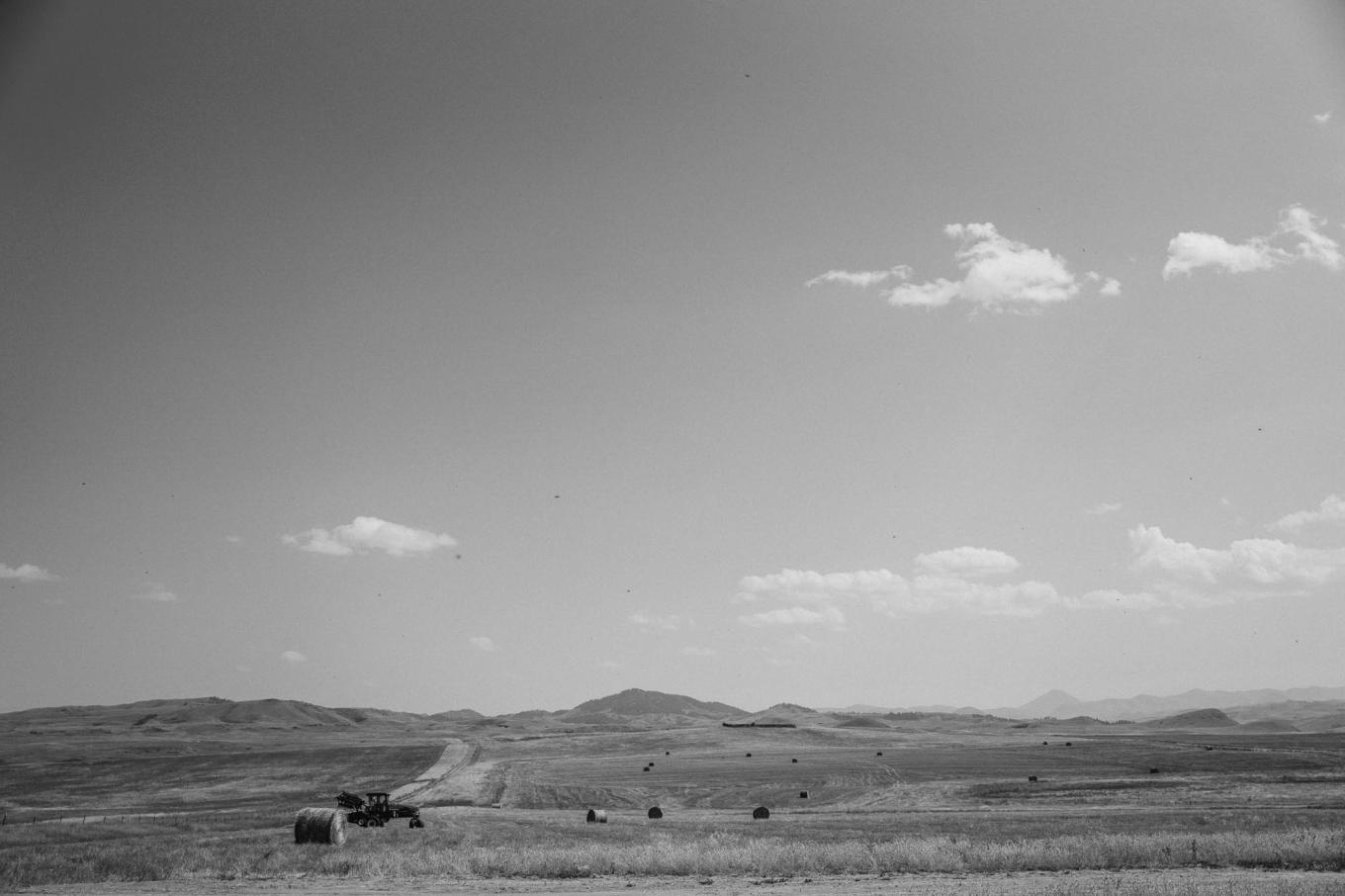
Jody Manuel
We have this new startup company, Gruff Grains, so that we can market our own crops direct-to-consumer.The one we’re starting with is emmer, which of course is an annual crop.
So we’re pretty much strictly a beef cattle operation. Our herd is a pretty even mix of Red and Black Angus. For our mother cow herd, we’re approaching 250 mother cows. For our calves, we keep them and finish them ourselves. We do sell some yearlings to another organic ranch in the southern part of Montana, so our yearling numbers fluctuate up and down, but anywhere from 50 to 250 head.
We’ve really been able to take some of our better native pastures that are further up in the hills and just give them a complete rest during the growing season, and actually save those acres for winter grazing. We’re grazing dormant plants, and everything is just left to grow in the summertime, which cuts our feed bill in half. It’s taken a lot of pressure off of our grazing operation as well as made room for expansion.
